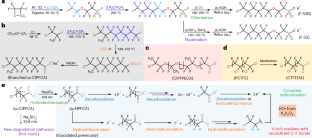2023-06-15 ペンシルベニア州立大学(PennState)
◆この能力は、3Dプリントや医薬品の送達などの将来の技術に重要な影響を与える可能性がある。今後は、生きた細菌や細胞を実験室で混合し、分離と制御を行う予定である。
<関連情報>
- https://www.psu.edu/news/engineering/story/penn-state-researchers-use-ultrasound-control-orientation-small-particles/
- https://onlinelibrary.wiley.com/doi/10.1002/smll.202300028
超音波による操作と活性ナノロッドの押し出しに成功 Ultrasound Manipulation and Extrusion of Active Nanorods
Leonardo Dominguez Rubio, Matthew Collins, Ayusman Sen, Igor S. Aranson
Small Published: 28 May 2023
DOI:https://doi.org/10.1002/smll.202300028

Abstract
Synthetic self-propelled nano and microparticles have a growing appeal for targeted drug delivery, collective functionality, and manipulation at the nanoscale. However, it is challenging to control their positions and orientations under confinement, e.g., in microchannels, nozzles, and microcapillaries. This study reports on the synergistic effect of acoustic and flow-induced focusing in microfluidic nozzles. In a microchannel with a nozzle, the balance between the acoustophoretic forces and the fluid drag due to streaming flows generated by the acoustic field controls the microparticle’s dynamics. This study manipulates the positions and orientations of dispersed particles and dense clusters inside the channel at a fixed frequency by tuning the acoustic intensity. The main findings are: first, this study successfully manipulates the positions and orientations of individual particles and dense clusters inside the channel at a fixed frequency by tuning the acoustic intensity. Second, when an external flow is applied, the acoustic field separates and selectively extrudes shape-anisotropic passive particles and self-propelled active nanorods. Finally, the observed phenomena are explained by multiphysics finite-element modeling. The results shed light on the control and extrusion of active particles in confined geometries and enable applications for acoustic cargo (e.g., drug) delivery, particle injection, and additive manufacturing via printed self-propelled active particles.



